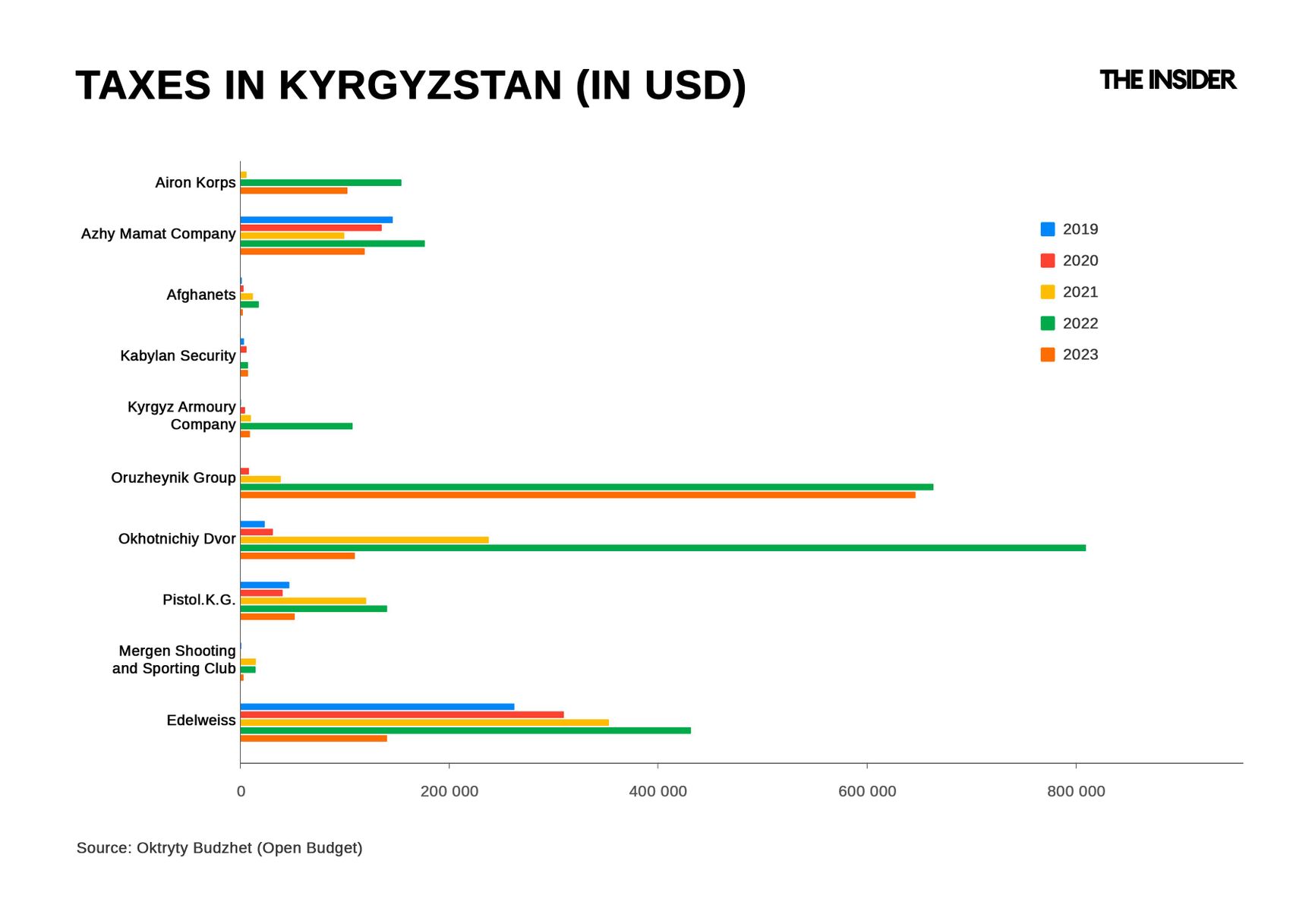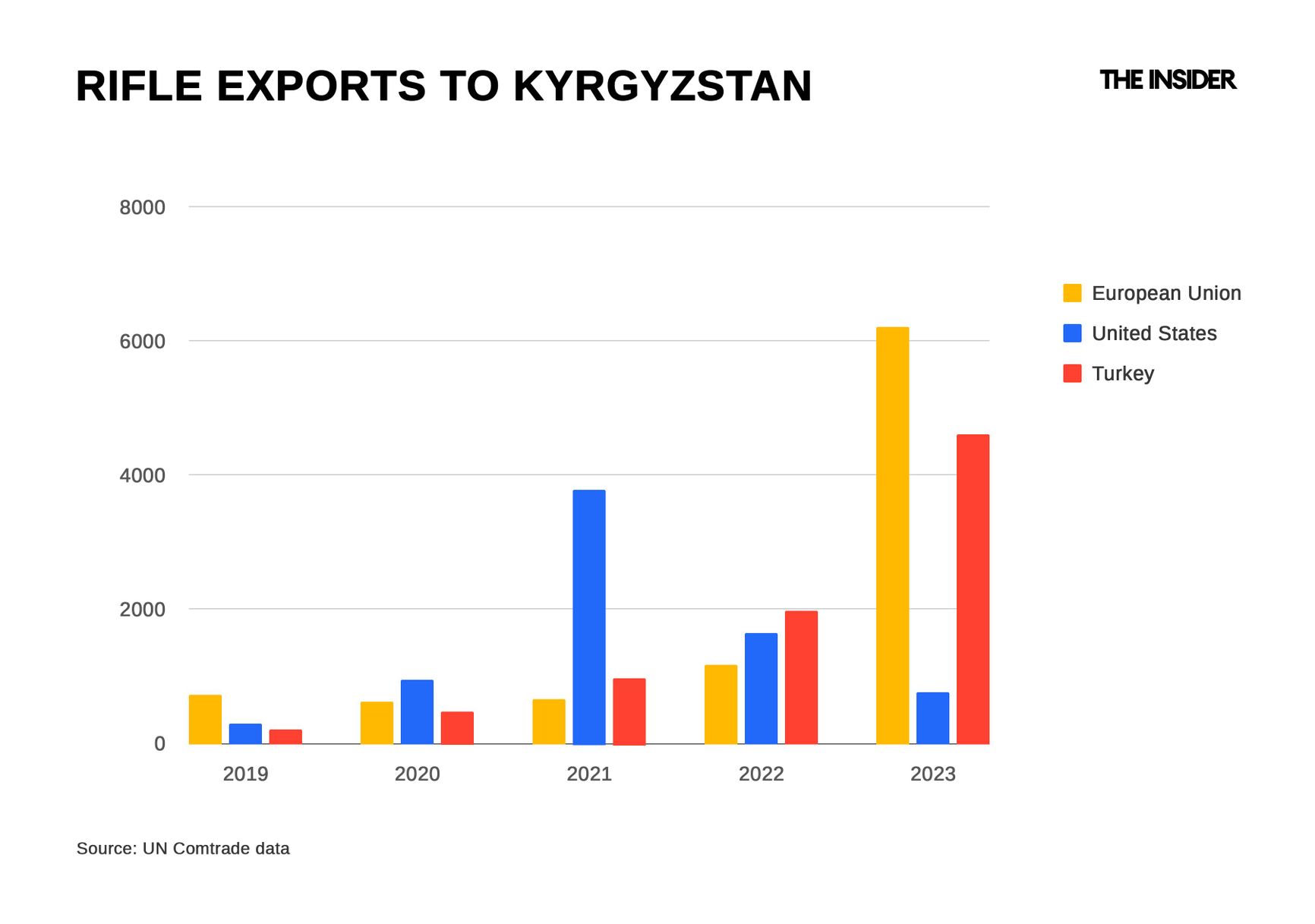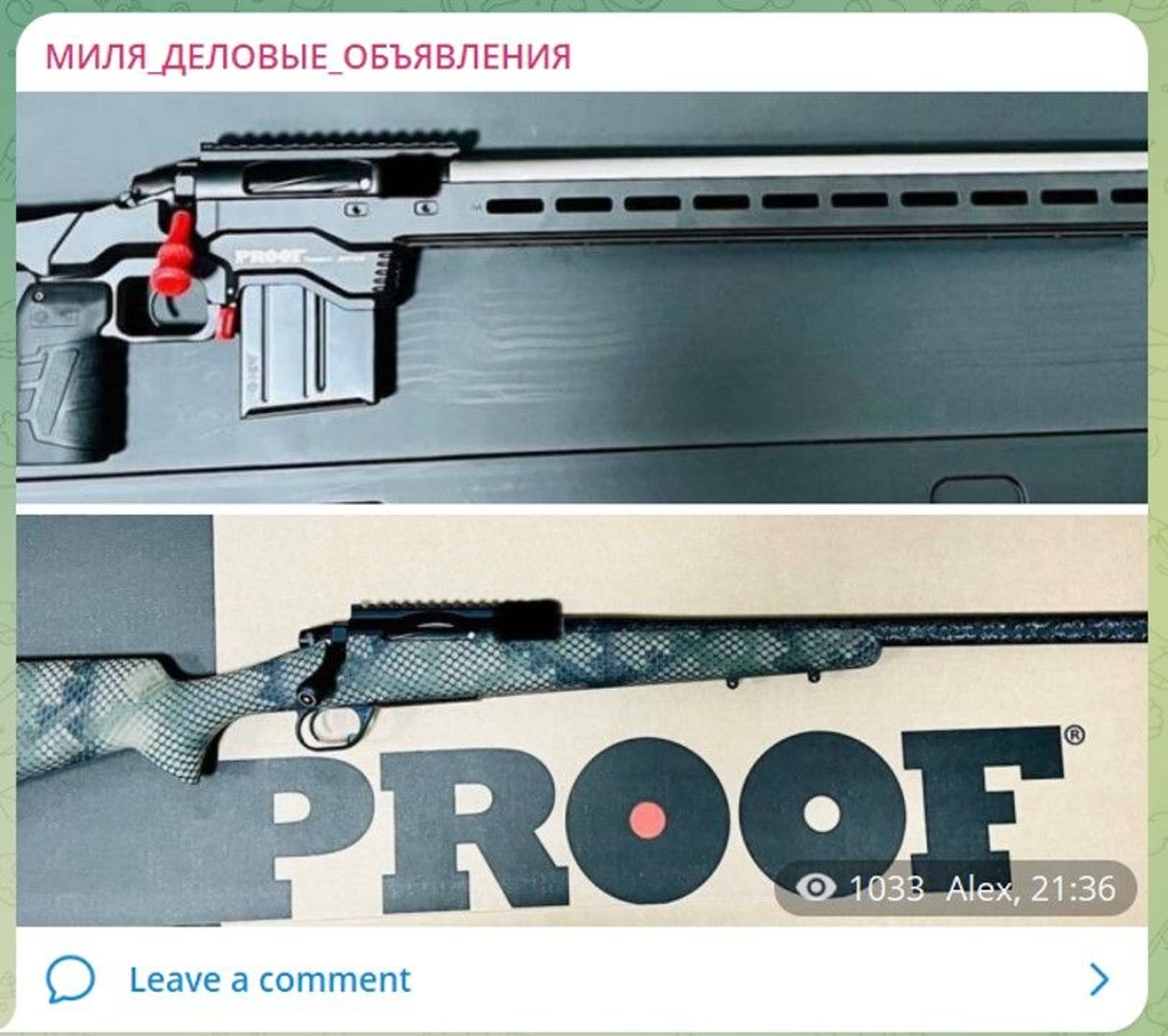
Footage of multiple firearms obtained in the search. Source: State Committee for National Security (Kyrgyzstan)
A member of an international group involved in smuggling firearms from the United States to Russia has been arrested in Kyrgyzstan. The country’s top intelligence agency, the GKNB, uncovered a transnational organized crime network that had established a firearms supply route from the U.S. to Russia via Kyrgyzstan, according to local media reports.
According to the agency, since April 2022, a group made up of citizens of Kyrgyzstan, Russia, and the U.S. have been operating an international weapons smuggling network. The group’s unnamed accomplices in the U.S. purchased firearms through online stores and concealed weapon parts in packages labeled as video equipment.The packages were sent to Kyrgyzstan, where the firearms were assembled and then smuggled into Russia. Investigative footage reveals that the smugglers used the United States Postal Service for shipments. Between April 2022 and 2024, the route facilitated the illegal delivery of over 300 firearms to Russia. They included Glock, Česká Zbrojovka (CZ), and Sig Sauer pistols and assault rifles, Benelli shotguns, and various types of ammunition.
On Jan. 23, 2025, Kyrgyz authorities arrested a citizen identified as S.M.M., born in 1998, while collecting a shipment from the U.S. According to the agency, a search uncovered two 5.56mm semi-automatic rifle barrels and a Glock-34 pistol barrel in his possession. Photos from the raid also revealed American-made Hornady ammunition, popular among Russian snipers. Two days later, Bishkek’s Pervomaisky District Court ordered S.M.M. to be held in a GKNB pre-trial detention facility.
The tip of the smuggling iceberg
This arrest came just a month and a half after a joint investigation by The Insider, Investigace, and IRPIMedia exposed weapons smuggling routes into Russia via post-Soviet states. The 300 firearms smuggled into Russia over the past three years represent only a fraction of the total shipments passing through Kyrgyzstan. Legal exports of thousands of weapons to these countries continue to operate within official trade frameworks.
Several sources — including tax records from weapons importers — indicate an unusual surge in firearm imports into Kyrgyzstan since the start of Russia’s full-scale invasion of Ukraine. In 2023, Kyrgyz gun importers paid 385% more in taxes compared to 2021 — the year before Russia came under massive Western sanctions.
№ KG417/037.US.02.00197 from 08.09.2022 and № KG417/037.US.00275 from 25.11.2022.
№ KG417/037.US.02.00025

Customs data also reveals a sharp increase in weapons shipments to Kyrgyzstan from the European Union and Turkey. According to UN Comtrade statistics, imports from the Czech Republic rose from 19 total units in 2021 to 1,015 in 2023. Kyrgyz companies did not buy any firearms from Italy in 2020-2021, but in 2022 they imported 882 units, followed by 4,434 in 2023. The largest supplier, however, was Turkey — another NATO member. Turkish firearm exports to Kyrgyzstan surged from 986 units in 2021 to 4,599 in 2023.
№ KG417/037.US.02.00197 from 08.09.2022 and № KG417/037.US.00275 from 25.11.2022.
№ KG417/037.US.02.00025

A report by the Central Asia Bureau of Analytical Reporting states that in 2021, Kyrgyzstan was home to 34,157 citizens who were licensed to carry hunting weapons. Given that 16,764 firearms were imported into the country between 2022 and 2023, this would imply that nearly every second hunter in the country, where average incomes are low, purchased a new imported rifle worth around $1,000.
Similar anomalies involving arms imports have been observed in Armenia and Kazakhstan, both members of the Russia-led Collective Security Treaty Organization (CSTO) and of the Eurasian Customs Union.
Evidence of re-exports and rare caliber weapons
Beyond statistical anomalies, there is more direct evidence that firearms imported into Kyrgyzstan end up in the hands of Russian buyers.
In 2022–2023, the Kyrgyz company Edelweiss obtained three conformity certificates for American-made Proof Research sniper rifles. These certificates, required for customs clearance, are valid across all Eurasian Customs Union countries. Edelweiss secured two certificates for the widely used .308 Win caliber, originally designed for military use but now common among both military and civilian shooters.
However, the third certificate, issued on Sept. 11, 2023, covered barrels for Proof Research rifles in the rare 6 Dasher caliber, which is almost nonexistent in the post-Soviet market. No Russian company has officially certified this caliber in the past three years. Nevertheless, on Jan. 30, 2024, an advertisement for a Proof Research MDT rifle in the 6 Dasher caliber appeared in a Russian sniper channel on Telegram.
№ KG417/037.US.02.00197 from 08.09.2022 and № KG417/037.US.00275 from 25.11.2022.
№ KG417/037.US.02.00025

The ad was posted by Sergey Alexandrovich Kirichenko, a Moscow resident born in 1982. A known sniper shooting enthusiast, Kirichenko was mentioned in The Insider’s December investigation. Between 2024 and 2025, Kirichenko posted over a dozen ads selling imported Proof Research rifles, promoting both in-stock weapons and upcoming shipments. Meanwhile, his business partners in Kyrgyzstan appear to be thriving — Edelweiss' tax payments surged from 20.03 million Kyrgyz som ($230,000) in 2020 to 37.91 million ($379,000) in 2023.
The past few years have seen a significant rise in weapons smuggling in Central Asia, particularly in Kyrgyzstan. This trend is driven by a combination of international sanctions, regional dynamics, and the global arms trade.
One major factor is the sanctions imposed on Russia following its annexation of Crimea in 2014. These restrictions aimed to cut off Russia’s access to foreign arms markets, forcing Western manufacturers to find alternative distribution channels.
When Russia launched its full-scale invasion of Ukraine in 2022, sanctions were further ramped up, making direct arms shipments to Russia nearly impossible. As a result, European and American companies began exploring ways to maintain exports to countries not subject to direct restrictions. This led to a rise in arms shipments to post-Soviet states such as Kazakhstan, Armenia, and Kyrgyzstan.
Kyrgyzstan, in particular, has become a key transit hub for weapons smuggling, with illicit networks exploiting its strategic location to channel firearms into Russia. Criminal groups used online retailers in the U.S. to purchase firearms, ship them to Kyrgyzstan for assembly, and then smuggle them into Russia. Law enforcement agencies across the post-Soviet region, including in Kyrgyzstan, have begun cracking down on these operations, as evidenced by the recent arrest of smuggling ring member S.M.M.
Meanwhile, despite sanctions, Russian snipers continue to gain access to Western firearms, as new supply chains emerge across Central Asia.
№ KG417/037.US.02.00197 from 08.09.2022 and № KG417/037.US.00275 from 25.11.2022.
№ KG417/037.US.02.00025